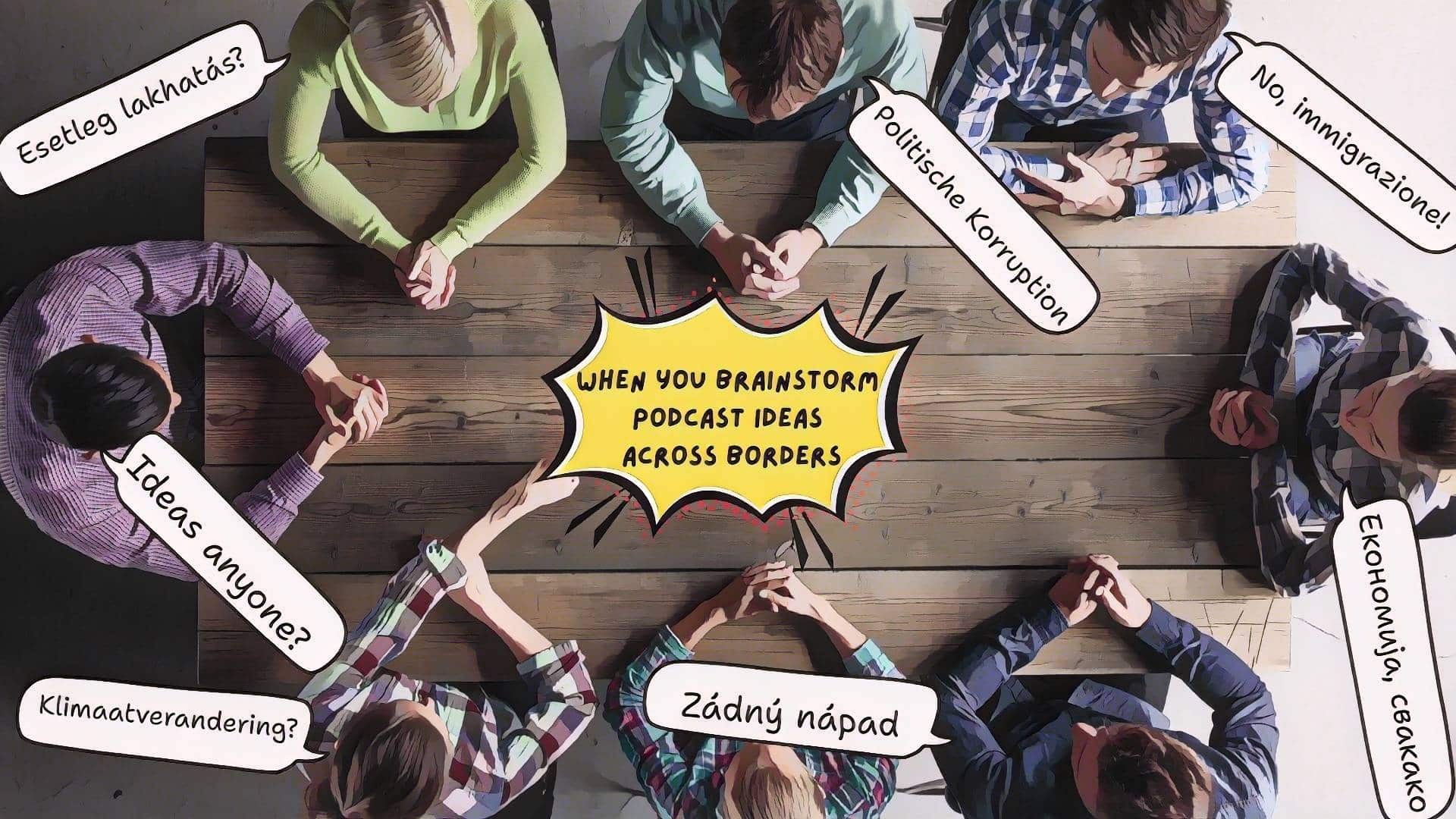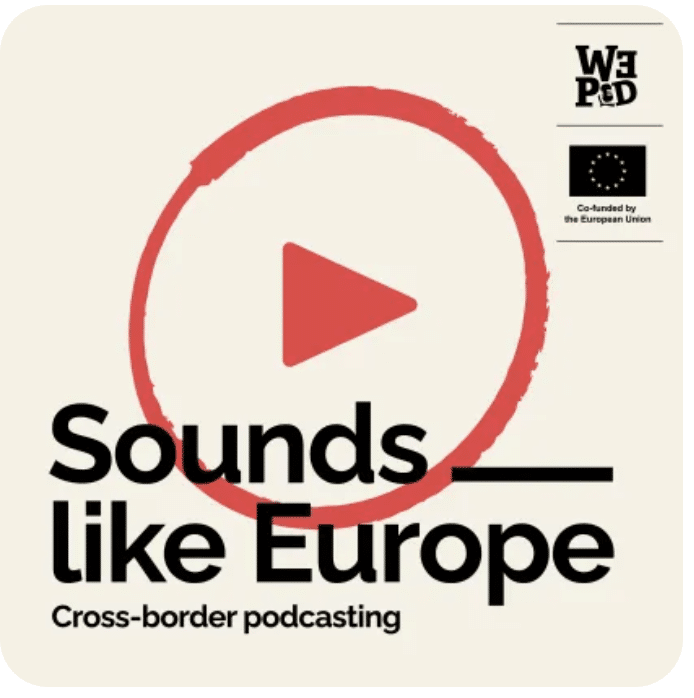Bring people who speak different languages and come from different cultures into the same project and things can get messy. But the results are worth it.

People around a table offer ideas in different languages. (Illustration by News Decoder)
This article was produced exclusively for News Decoder’s global news service. It is through articles like this that News Decoder strives to provide context to complex global events and issues and teach global awareness through the lens of journalism. Learn how you can incorporate our resources and services into your classroom or educational program.
Hi, I’m Andrea, your communications manager.
That’s how I started every monthly edition of the Sounds Like Europe newsletter for the WePod project, an innovative multi-partner, cross-border project to support the growth and sustainability of the European podcasting ecosystem.
For two years as News Decoder’s communication specialist for the project, I tried to capture the life of a cross-border experiment in podcasting: the events, the workshops, the premieres of new audio series.
But behind each newsletter was a bigger story — about what it means to communicate across countries, cultures and languages.
From the start, WePod was built on diversity. Partners from Spain, France, Italy, Hungary, Belgium, Serbia and Poland worked together to co-produce podcasts and run events. In meetings, English was the shared language, but accents, idioms and cultural habits constantly shaped the conversation.
The challenge of many voices
Cross-border meetings could feel messy, like juggling multiple perspectives all at once. A phrase that sounded sharp in French turned clumsy in English. A slogan that worked perfectly in Spanish lost its rhythm in German. Even deadlines meant different things depending on who you asked.
It wasn’t always easy. But it taught me something important: journalism across borders is not about erasing differences, but about working through them.
As communications manager, I quickly learned that translation is never just about swapping words. It’s about tone, style, even design. A press release that sounded professional in Paris could feel cold in Rome. A social media graphic that looked fresh in Madrid felt too flashy in Berlin.
The solution was to build a common identity and then let each country adapt it. Slower, yes. But the result felt more authentic, and audiences responded.
These challenges are not unique to communication teams; they are central to journalism itself. The biggest stories today — migration, climate change, political unrest — rarely stop at national frontiers. To cover them well, reporters must collaborate across borders.
Translation beyond words
That type of collaboration is messy. Sources are harder to coordinate. Legal and cultural differences can complicate investigations. And readers, or listeners, may have very different expectations depending on their nationality or where they live.
But when it works, it is powerful. Our podcasts carried voices across Europe, letting audiences in one country hear accents, pauses and perspectives from another. It turned abstract debates into human stories.
Working across cultures also reminded me that projects are not just tasks — they are people. Some partners preferred long memos, others quick calls. Some valued hierarchy, others wanted open debate. I learned to leave space for informal chat, to ask how colleagues were doing before diving into deadlines.
Those small gestures built trust, and trust kept the project moving.
For young journalists and students, the lesson is simple: cross-border work can feel messy, but it’s worth it. Don’t be discouraged by misunderstandings; they often lead to clearer understanding. Pay attention not only to language, but to culture. And above all, listen.
My two years with WePod taught me that communication is less about perfect phrasing and more about building bridges. In the end, that is what journalism itself is meant to do: connect people across borders, cultures and languages.
Questions to consider:
1. What does the author mean by translating is more than swapping out words?
2. How can people from different countries and cultures find a common identity?
3. How would you communicate with someone who speaks a different language?

Andrea Knezevic was the communications specialist for News Decoder’s role in the WePod project. A journalist and university professor with more than a decade of experience honing the art of storytelling and effective communication, she splits her time between Paris and Brussels.

